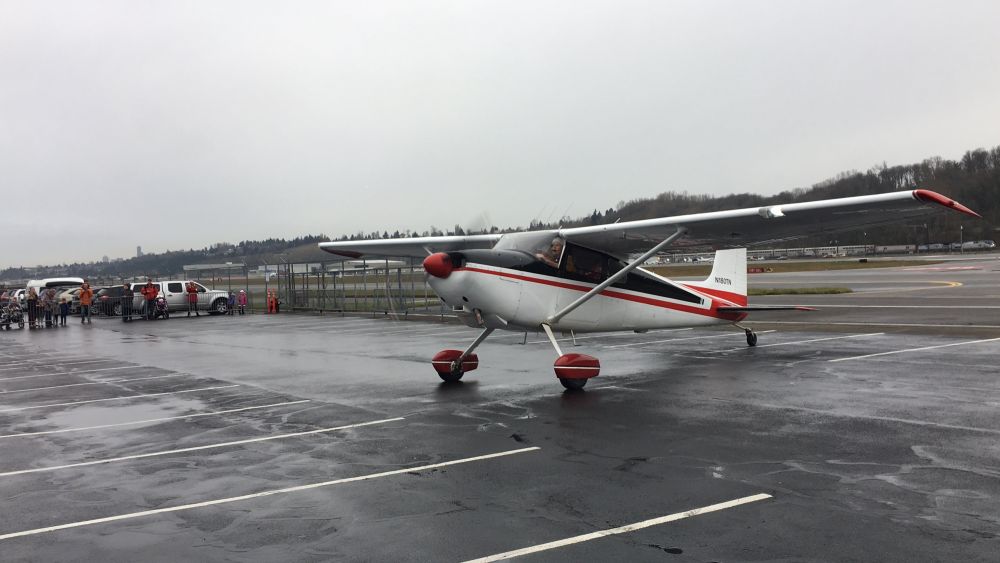19,000lbs以下の航空機のRegulationsである14 CFR Part 23がパフォーマンスベースドスタンダードに移行して約5年が過ぎた。パフォーマンスベースドになっても特に変わっていないのか、それとも実質変わっているのか気になったので、Regulationsおよび関連ガイダンスをすこし読んだのでまとめる。
何が変わったのか
なぜ変わったのか、何が変わったのかなどの詳しい説明はRevision of Airworthiness Standards for Normal, Utility, Acrobatic, and Commuter Category Airplanesに記載されており、かなり広範囲にわたる。全容を把握しきれていないが、サマリーでいうと
- Regulationsから具体的な要求をなるべく消して、さまざまな航空機の適合性証明に対応できるようにした
- EASAではすでにパフォーマンスベースドが進んでおり、それとのHarmonizationを確保した
などである。
具体例:縦トリム
これだけだとイメージが掴みにくいので、具体例を見てみる。たとえば、14 CFR 23のAmdt. 23-63改訂まででは、縦トリムに関しては下記のとおりだった。
§ 23.161(c) Longitudinal trim. The airplane must maintain longitudinal trim under each of the following conditions:
(1) A climb with –
(i) Takeoff power, landing gear retracted, wing flaps in the takeoff position(s), at the speeds used in determining the climb performance required by § 23.65; and
(ii) Maximum continuous power at the speeds and in the configuration used in determining the climb performance required by § 23.69(a).
(2) Level flight at all speeds from the lesser of VH and either VNO or VMO/MMO (as appropriate), to 1.4 VS1, with the landing gear and flaps retracted.
(3) A descent at VNO or VMO/MMO, whichever is applicable, with power off and with the landing gear and flaps retracted.
(4) Approach with landing gear extended and with –
(i) A 3 degree angle of descent, with flaps retracted and at a speed of 1.4 VS1;
(ii) A 3 degree angle of descent, flaps in the landing position(s) at VREF; and
(iii) An approach gradient equal to the steepest used in the landing distance demonstrations of § 23.75, flaps in the landing position(s) at VREF.
14 CFR Part 23 Amdt. 23-63
かなり具体的である。Applicantsはこの条件でトリムが取れることを示せばよく、解析や試験がしやすい。たとえば、下記の条件でやればよい。
- 離陸推力、脚上げ、離陸フラップ位置、上昇性能で使った速度
- 最大連続推力、上昇性能で使った速度
- 水平飛行推力、VMO/MMOから1.4VSまでの速度、脚上げ、フラップ上げ
- Idle推力、VMO/MMO、脚上げ、フラップ上げ
- 3 deg pathに必要な推力、脚下げ、フラップ上げ、1.4VS
- 3 deg pathに必要な推力、脚下げ、着陸フラップ、VREF
- Steep approach用の推力、脚下げ、着陸フラップ、VREF
一方、Amdt. 23-64では次のように変わった。
The airplane must maintain longitudinal trim without further force upon, or movement of, the primary flight controls or corresponding trim controls by the pilot, or the flight control system, under the following conditions:
(1) Climb.
(2) Level flight.
(3) Descent.
(4) Approach.
14 CFR Part 23 Amdt. 23-64
だいぶ大雑把になり、具体的な速度や推力、脚位置やフラップに対する要求が消えた。具体的な要求が書いてあると、よくある形の飛行機の場合は対応しなければいけないことが明確で飛行機が作りやすい・試験しやすい反面、全く新しい形態の飛行機の場合は字義通り適合性証明を行うことが難しい。それに対応したのかなという感じがする。
しかしここまでざっくりだとどう飛行機を設計すればいいのだろうか?という感じがしてくる。そこで、FAAはAcceptable Means of ComplianceとしてASTMの基準を使ってもいいですよと書いてある。具体的には次のとおり。

これを見ると、23.2140のTrimのAcceptable Means of Complianceは、F3264-21に書いてあり、ASTM F3173/F3173Mの21 Standard Specification for Aircraft Handling Characteristicsを見なさいと書いてある。そこでASTM F3173/F3173Mを見てみる。
5.3 Longitudinal Trim—The aeroplane shall maintain longitudinal trim under each of the following conditions:
5.3.1 For Level 1 aeroplanes with VS0 ≤ 45 KCAS:
5.3.1.1 In level flight at any speed from 1.4 VS1 to 0.9 VH or VC (whichever is lower), and
5.3.1.2 In a climb with maximum continuous power at a speed VY with landing gear and wing flaps retracted, and
5.3.1.3 In a descent with idle power at a speed of 1.3 VS1 with landing gear extended and wing flaps in the landing position.
5.3.2 For Level 1 aeroplanes with VS0 > 45 KCAS and Level 2, 3, and 4 aeroplanes, a climb with:
5.3.2.1 Takeoff power, landing gear retracted, wing flaps in the takeoff position(s), at the speeds used in determining the climb performance required by Specification F3179/F3179M Climb–All Engines Operating, and
5.3.2.2 Maximum continuous power at the speeds and in the configuration used in determining the climb performance required by Specification F3179/F3179MEn Route Climb/ Descent: All Engines Operating.
5.3.3 Level flight at all speeds from the lesser of VH and either VNO or VMO/MMO (as appropriate), to 1.4 VS1, with the landing gear and flaps retracted;
5.3.4 A descent at VNO or VMO/MMO, whichever is applicable, with idle power and with the landing gear and flaps retracted; and
5.3.5 Approach with landing gear extended and with: 5.3.5.1 A 3° angle of descent with flaps retracted and at a speed of 1.4 VS1;
5.3.5.2 A 3° angle of descent with flaps in the landing position(s) at VREF, and
5.3.5.3 An approach gradient equal to the steepest used in the landing distance demonstrations of Specification F3179/ F3179M Landing Distance with flaps in the landing position(s) at VREF.
ASTM F3173/F3173M Standard Specification for Aircraft Handling Characteristics
これを見ると、ほとんどAmdt. 23-63の14 CFR Part 23.161(c)と同じである。違うのは、飛行機のLevelが定義されていること、そのLevelに応じてClimbの条件がすこし異なる、イギリス英語で書かれていることなどである。ここでいうLevelは23.2005(b)に定義されており、乗れる人数で機体の大きさをわけている。
Airplane certification levels are:
(1) Level 1 – for airplanes with a maximum seating configuration of 0 to 1 passengers.
(2) Level 2 – for airplanes with a maximum seating configuration of 2 to 6 passengers.
(3) Level 3 – for airplanes with a maximum seating configuration of 7 to 9 passengers.
(4) Level 4 – for airplanes with a maximum seating configuration of 10 to 19 passengers.
23.2005 Certification of normal category airplanes.
具体例:VMC
もうひとつ例を見てみる。Minimum Control Speed (VMC)のRegulationsはどうか。これもAmdt. 23-64で大きく簡素化されている。
23.2135(c) VMC is the calibrated airspeed at which, following the sudden critical loss of thrust, it is possible to maintain control of the airplane. For multiengine airplanes, the applicant must determine VMC, if applicable, for the most critical configurations used in takeoff and landing operations.
14 CFR Part 23 Amdt. 23-64
ただし、これもAmdt. 23-63の23.149とASTM F3173/F3173M-21aを比較すると、ほとんど差がない。たとえば冒頭部分のdiffを取ったのが下記の画像である。

イギリス英語とアメリカ英語の違いや細かい章立ての違いはあるが、本質はほとんど変わっていないことがわかる。
まとめ
縦トリムとVMCで見たところ、次のことが分かった。
- Regulationsは大きく簡素化・一般化されており、従来の飛行機の形に当てはまらない機体にも適用できるようになった
- 一方で、Acceptable Means of Complianceとして提示されているASTMの基準を見ると、中身はほぼAmdt 23-63以前の14 CFR Part 23からのコピペである
ちなみにASTMのStandardsを見るのには公式サイトから見るとお金がかかる。お金をかけずに見る方法が欲しいけれど見つけられていない。



コメント